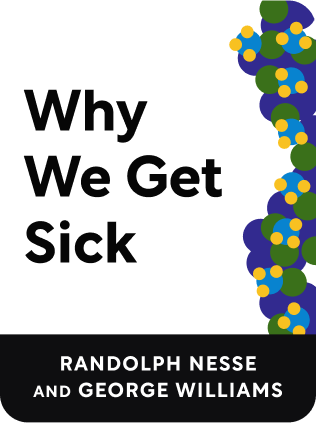

This article is an excerpt from the Shortform book guide to "Why We Get Sick" by Randolph Nesse and George Williams. Shortform has the world's best summaries and analyses of books you should be reading.
Like this article? Sign up for a free trial here .
Why are obesity and dental cavities effects of evolution? Why does modern food trigger supernormal stimuli in our bodies?
The human body is evolved for life in the Stone Age. Our way of living changed so rapidly that evolution has yet to catch up and our bodies are paying the price.
Keep reading to learn why our bodies are still adapted for the Stone Age and how that’s hurting us.
Stone Age Genes in Modern Times
A major reason that disease-causing genes still exist is that they may have been beneficial during life in the Stone Age, but only cause disease in today’s environment.
Consider how vastly different the survival conditions of early humans were, compared to the modern age.
- Mortality was high. In fact, humans reproduced at a rate just enough to balance mortality. If humans increased population at 1% per century, this would have led to a 1000x population growth in 70k years, which did not happen. This suggests the death rate was very high.
- Infectious diseases were probably the most common cause of mortality. Much genetic selection would then have favored genes that protected against infectious disease.
- For food, humans hunted and gathered. Contrary to popular media depiction, humans got food less often from aggressive raids with weapons, and more from scavenging carcasses.
- Food sources were highly variable and subject to environmental conditions. This promoted conflict between groups.
- Within your small tribe, altruistic traits such as love, charity, and honesty promoted survival. Furthermore, since your tribe was likely to be made up of close relatives, kin selection was strong. However, there was no selection for global altruism—no survival benefit from looking kindly on the entire human species.
Humans (or our primate ancestors) lived this way for millions of years. Only in the past 20,000 years is agriculture believed to have been developed.
Therefore, it’s reasonable that ancestral genes promoted survival in the past, but have only recently become a liability in modern environments. Here’s a list of examples.
Nutritional Excess and Evolution
In a resource-scarce world, wanting more sugar, fat, protein, salt was a survival trait. Storing more weight in response to food was a survival trait in times of famine.
We do have natural limits to overeating in a single meal, stopping us from overburdening our GI systems. But we don’t have built-in limits to long-term overeating. This is why people can carry a body weight far beyond what is normal.
We’re not even prepared for today’s selection of food. As hunter-gatherers in the Stone Age, we adapted to pick the sweetest fruit. But what happens if you surround yourself with cheesecake and candy bars? Modern food triggers supernormal stimuli that excite your senses far beyond natural foods.
- Another example illustrates how the modern world can be confusing. If you put an egg and a tennis ball near a goose nest, she will roll the tennis ball back into the nest. The ball is more egglike than an egg. Likewise, our modern, processed food is more food-like than real food.
Our genes also work against us during weight loss. Because we evolved to survive famine, when our bodies detect a deficit in calories, they cut our metabolism to conserve calories. This makes further weight loss difficult.
Finally, today’s diet may cause diseases that never appeared in the past. In the prehistoric past, dental cavities were never a problem, as evidenced in skeletal remains. It’s only today’s sugar-rich diets that cause them.
Dietary Inadequacies
Ironically, our resource-rich environment may promote dietary inadequacies.
When agriculture was developed, humans often developed vitamin C deficiency, due to less foraging of vitamin-rich foods like berries, and more eating of wheat and corn.
Today, artificial sweeteners trigger the body’s expectations for the actual ingestion of sugar. Stone-Age humans never lived in a time when artificial, non-digestible sweeteners existed. The body reduces glycolysis and blood sugar in response to sweeteners; if no real sugar is absorbed, the body may go into hypoglycemia (low blood sugar) and thus crave more food.
Lack of Movement
In human history, it was adaptive to conserve energy by being lazy whenever possible.
Clearly in today’s sedentary environment we move far less than hunter-gatherers.
Myopia
25% of the human population is myopic, or near-sighted. A simple line of thinking would ask, “How could this portion of people possibly have survived in ancestral times?”
Instead, consider that myopia might be a modern artifact of how we use our eyes—namely, that we do much more close reading than Stone Age people did.
What’s the mechanism behind myopia? During development, the eye grows in response to visual blurriness fed to the brain. (If only one part of the visual field is blurry, only that part of eye grows, leading to astigmatism). This system is usually remarkably accurate—the margin of error for focusing the lens on the retina is 1% the length of the eyeball.
For 25% of people, something about reading or other close work causes the eye to keep growing inappropriately, leading to myopia. This could be the blurred edges of letters, or a focus on a close book with blurred surroundings.
If today’s near-sighted people had been born in a hunter-gatherer society, where no reading was done, they likely wouldn’t have vision problems.
Alcoholism/Addiction
Alcoholism is only a modern problem with the widespread availability of alcohol and distillation into high-proof spirits. In the historical past, alcoholism wasn’t as much a problem with low-alcohol content drinks like fermented fruit, or when homes had to prepare their own alcohol.
Likewise, addiction to drugs arose when opium was processed into the more addictive heroin, and coca into cocaine. Substance abuse seems to be largely a consequence of today’s environment.
Why might genes predisposing to alcoholism have been helpful in older times? These genes may have increased the ability to pursue rewards despite difficulties, or psychological reinforcement in response to certain rewards. These are hallmarks of alcoholic behavior, and would have been useful in many situations.
Skin Color
Humans adapted their skin color for the areas they developed in. In northern areas with low sunlight, humans developed light skin to absorb and avoid vitamin D deficiency. In equatorial areas with plenty of sunlight, humans developed dark skin to limit UV radiation.
Now that different colored humans live all around the globe, the skin can now cause disadvantages in different climates. Light-skinned people in sunny areas get skin cancer. Dark-skinned people in low-sunlight areas get insufficient vitamin D.

———End of Preview———
Like what you just read? Read the rest of the world's best book summary and analysis of Randolph Nesse and George Williams's "Why We Get Sick" at Shortform .
Here's what you'll find in our full Why We Get Sick summary :
- Why evolution hasn't rid humans of all diseases
- How reproductive fitness is more important than overall survival
- How you evolved to dislike the sound of a baby crying






